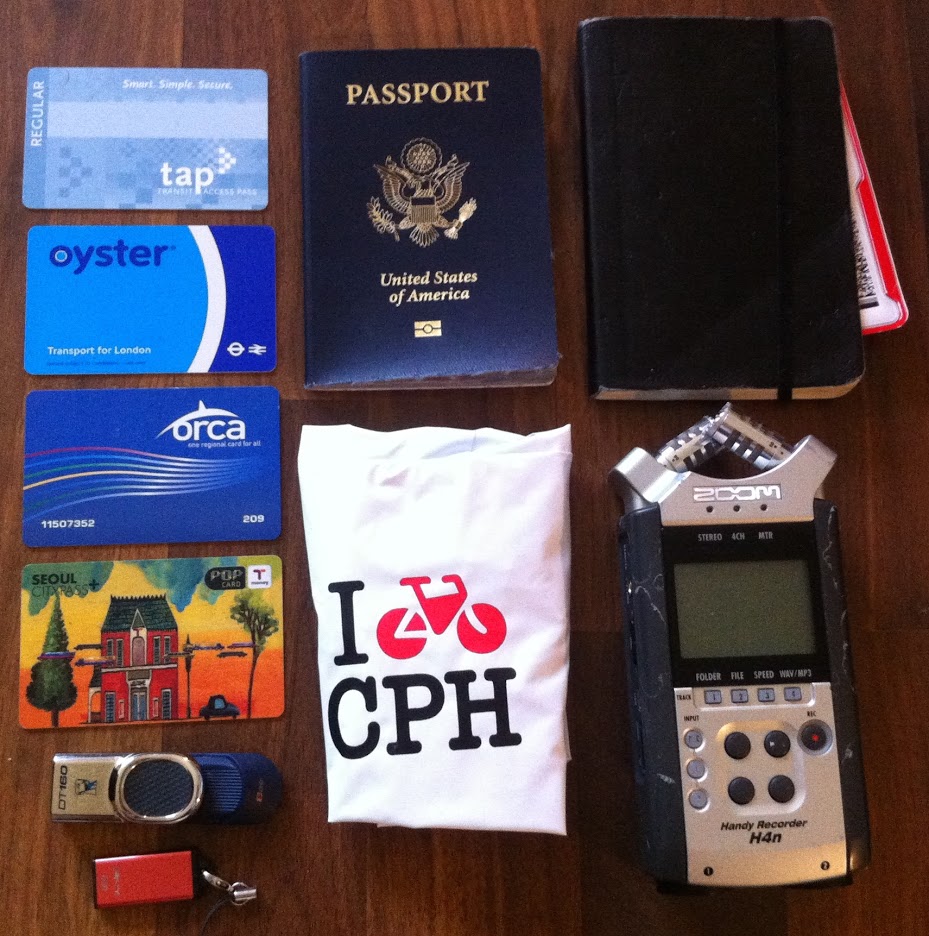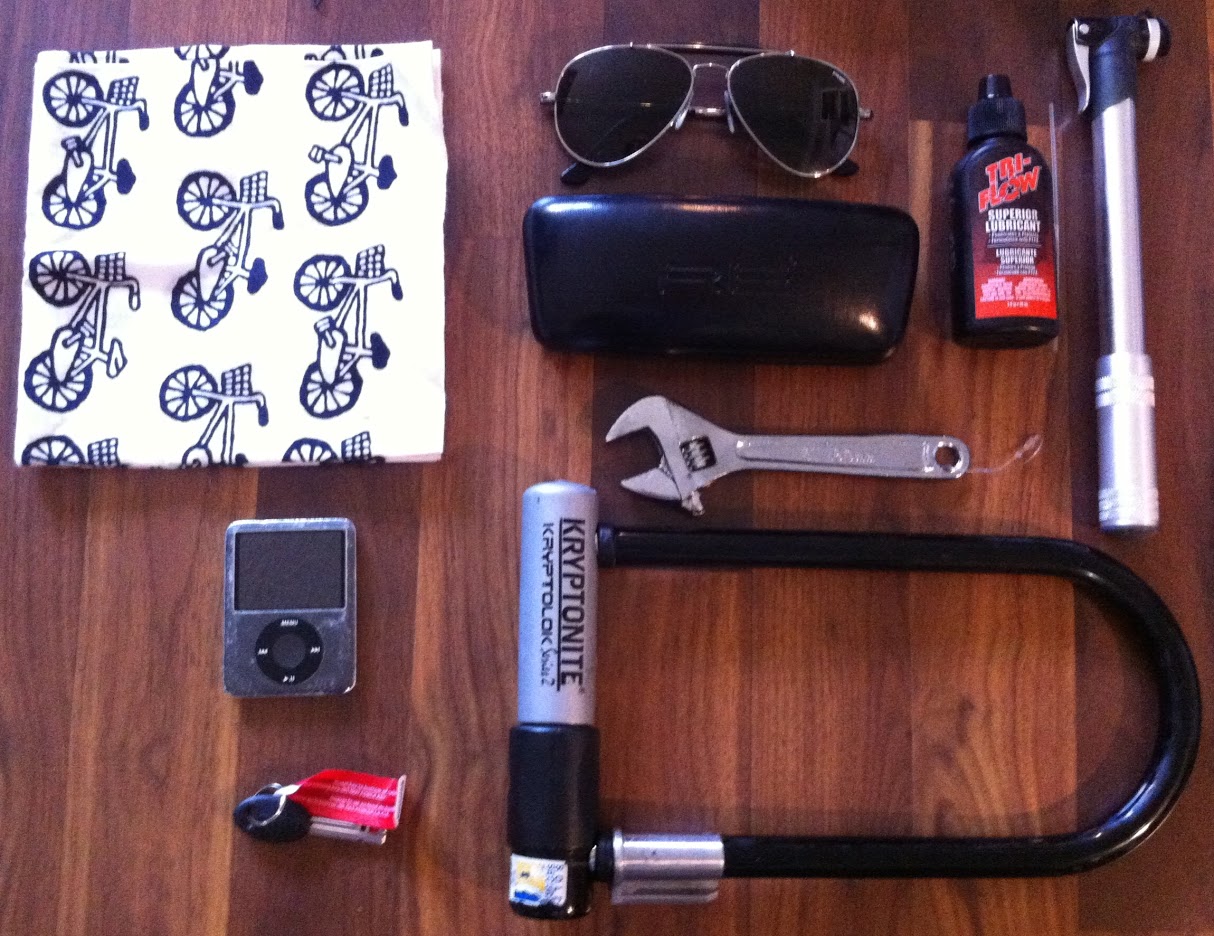What’s in my bag? – Colin Marshall
Colin Marshall hosts and produces the world-traveling, in-depth interview podcast Notebook on Cities and Culture and writes essays on cities, ...
Colin Marshall hosts and produces the world-traveling, in-depth interview podcast Notebook on Cities and Culture and writes essays on cities, language, Asia, and men’s style. His forthcoming book is called A Los Angeles Primer: Mastering the Stateless City.
I go around Los Angeles/the world writing essays and recording interviews about cities. In this endeavor, I carry always and everywhere the same two things that everyone else does. By “everyone” I, of course, mean “every bike-riding thirty-year-old with no traditionally identifiable job,” and by “the two items” I mean a Chrome Citizen Messenger Bag and a 13.3-inch MacBook Air. If you live in San Francisco, home of Chrome headquarters, you spot these bags all too often. In Los Angeles, however, mine, especially the strap’s griffin-emblazoned seat belt-style buckle, still draws compliments. (“Hey, I like your Ferrari thing,” said one rich-looking, out-of-it-seeming middle-aged lady.) The MacBook, not so much; the girl at the Apple Store where I picked it up (refurbished, natch) just said, “You’re a writer, right?”
The bag has proven impressively durable over the past four or five years, especially since my previous messengers all tended to disintegrate within two or three. In the unlikely event that it does fall apart, I’ll replace it not with another black-on-black one, having almost fully phased that unworkable color out of my wardrobe, but maybe with the gray Motor Citizen — better to match the MacBook. That particular piece of technology looks a bit more distinctive when I bring it out in its Harris Tweed sleeve, an anniversary gift from my girlfriend. If you, too, live the sort of life which involves a constant search for Harris Tweeds, for your laptop or otherwise, make sure you keep an eye out for that distinctive orb and cross — the emblem of at least probable authenticity.
Whatever they sheathe it in, if everyone else does indeed use this same MacBook, they use it for good reason. Its the-future-is-now battery life frees me from even having to carry its (admittedly, pretty unwieldy) power cord during the day, no matter how many coffee shops I plan to park myself in. It also allows me to produce my entire podcast on the go — a valuable capability, since the show’s very premise has me traveling around looking for interviewees. I’ve recorded the interviews themselves with a handheld Zoom H4n Handy Recorder since day one. That third-party fluffy windscreen next to it — known, in the business, as a “dead kitty” — has proven essential, but I didn’t actually get around to buying it until the day I found, to my horror, that I’d neglected to pack the H4n’s (inadequate) included one.
I got the new windscreen in Copenhagen — or “CPH,” as that bike-seat protector next to the recorder calls it. They have more rain there than we do in Los Angeles (not to mention a considerably larger cycling population) so such an item makes sense there, but also in the various other countries in which I find myself. Hence the passport, which, according to one school of thought, I probably shouldn’t carry around all the time. But I do so as a precautionary measure against my odds of, given the increasing frequency of my international flights, turning up at the airport without it. (I’ll spare you my standard incredulous lament about the fact that, in 2014, we still need a paper booklet in order to go from place to place.)
Some reassurance does come from the rest of What’s in My Bag crowd’s apparent tendency to remain passported at all times. But it also reminds me that well-stamped travel documents no longer confer bragging rights; hence the need hang on to all the subway payment cards I collect, proof of not just one’s worldliness but one’s transit-riding acumen. Pictured here, we have Los Angeles’ TAP, London’s Oyster, Seattle’s ORCA, and Seoul’s T-Money (which actually works in South Korea’s other major cities too, one of those foreign conveniences that makes you wonder what happened to America). It does make practical sense, I would argue, to keep on hand and thus never have to re-purchase all the cards of cities with which you have ongoing relationships — especially Seattle’s, which costs a criminal five dollars.
Despite riding a bicycle (a folding Dahon Speed D7, which I reviewed elsewhere on Cool Tools) as my primary means of transportation, I perhaps foolishly don’t carry quite as much gear as some: a Kryptonite U-Lock, a spare key to it, a small bottle of Tri-Flow, a handheld tire pump, and, for the occasional tightening here and there, a wrench I bought from my local Daiso. (I can’t tell you how many TSA screenings that wrench made it through before an agent pulled me aside and rooted through my bag for it.) That bicycle-patterned tenugui towel also came as a present from my girlfriend, who picked it up at a Japanese store in Venice, though it always seems too nice to use in any normally towel-y capacity.
Though they’ve taken more than their fare share of scratches at this point, my sunglasses, Randolph Engineering Sportsman (Sportsmen?), have over all these years miraculously escaped loss or breakage. They do require professional bending back into shape every once in a while, but on the whole they provide further to support that reliable maxim about men’s clothing and accessories: the more you pay up front, the less you pay in the long run.
Given everything else about my life, I suspect I’d get some sort of fine if I failed to pack at least one Moleskine notebook, of which my stock, initially built up in the mid-2000s, has lasted to this day. File them under the “useful at weird times” category; I don’t write in them habitually, but I do find them awfully useful when, for instance, I lose GPS access in a foreign country and have to hand-draw maps to find my way. The pens to do that, all cheap, I stick into pockets apparently designed into the bag for just that purpose. (The pin near them comes from Seoul’s Owl Arts and Crafts Museum, a visit to which I couldn’t recommend more highly.) The same goes for the USB drives; you’d think our Dropbox age had eliminated the need for them, but they solve more than enough problems to compensate for their negligible bulk.
Then again, you wouldn’t call me an early adopter. I’ve also got a circa-2008 iPod, still going strong, that I use to listen to language podcasts (favorites include Talk to Me in Korean, Notes in Spanish, and NHK Japanese) whenever I happen to have working earbuds, which never seem to last me more than a few months. And speaking of second, third, and fourth languages, if you want to carry books, I recommend carrying around ones written in your non-native tongue. (Pictured: I Yeong-jun’s Nervous City, about Seoul, and J.M. Servin’s D.F. Confidencial, about Mexico City.) They last longer, and if you feel like slacking off some other project and reading, you can always call it “studying.”
Allow me to express my gratitude for this opportunity not just to think about what I carry, and not just to clean out and re-organize the contents of my bag, but to consider what items aren’t in my bag that I now realize I need: a second type of bike lock, Excedrin, a spare phone charger, contact-lens supplies, extra collar stays, deodorant, something niftier (possibly tweedier) to put that passport in. Ask yourself what, until now, I didn’t ask myself: can your bag do without these things?
02/23/15(Cool Tools Readers! We will pay you $100 if we run your "What's in My Bag" story. Send photos of the things in your bag (and of the bag itself, if you love it), along with a description of the items and why they are useful. Make sure the photos are large (1200 pixels wide, at least) and clear. Use a free file sharing service to upload the photos, and email the text to editor@cool-tools.org. -- Mark Frauenfelder — editors)
















